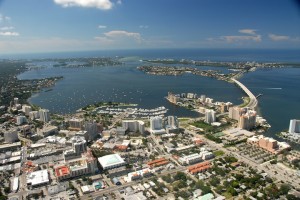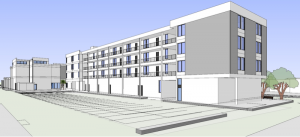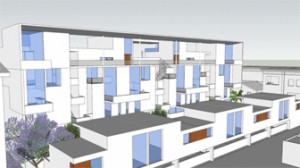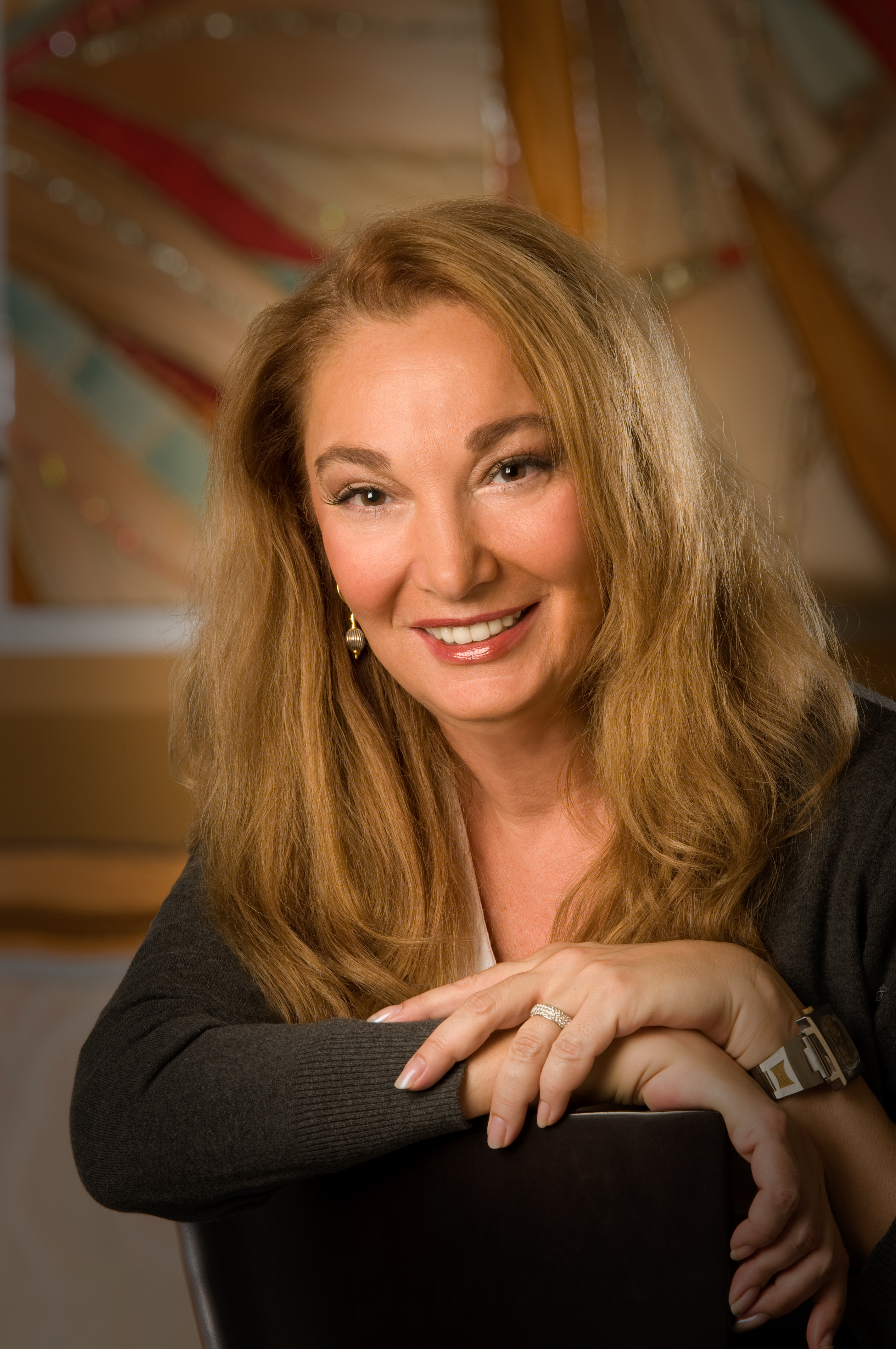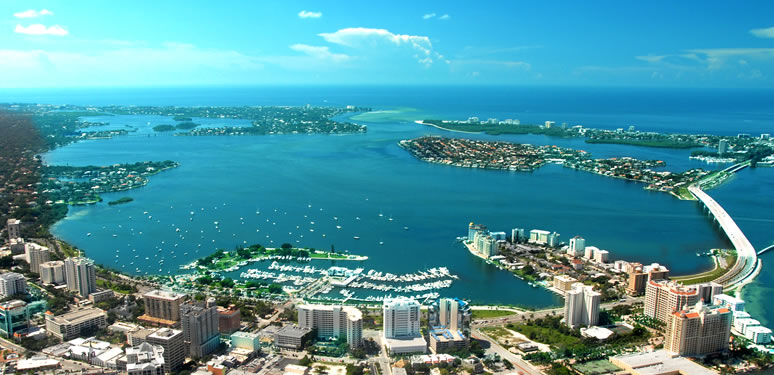
From construction to parking meters, from fights over special events downtown to … fights over bars downtown, here’s the top 10 stories from this off-season.
The off-season in Sarasota seems to get a little less quiet every year. While snowbirds retreated to more temperate climates, plenty was happening around town. Here are 10 of the biggest stories that happened between May and October — and some of what’s ahead when season truly kicks into gear.
- Construction comes with growing pains
People might have left Sarasota during the summer, but the cranes didn’t go anywhere.
Developments big and small continue to move forward, from the mammoth Vue Sarasota Bay to the two-story commercial building at 2101 Main St. that will house the Puerto Rican restaurant Sofrito Mama’s.
The Vue Sarasota Bay development has been the subject of harsh criticism from residents.
Even projects that aren’t under construction are advancing. In May, the city approved a comprehensive plan amendment that will allow entrepreneur Harvey Vengroff to proceed with plans for a 393-unit affordable apartment complex at 2211 Fruitville Road.
In August, the city Planning Board voted unanimously to approve the development plan for Sarasota Bayside, the mixed-use project slated for the former Quay property on the bayfront. The plans, still subject to final City Commission review, include up to 695 condo units, 175 hotel rooms, 189,050 square feet of retail space and 38,972 square feet of office space.
Citizen concern regarding the rate of growth is mounting. A new resident activist group called STOP held its first public meeting in September, announcing its intention to advocate for policy changes designed to reduce the impacts of growth. As the city prepares to publicly review a new form-based zoning code, STOP is pushing to restrict administrative approval of proposed developments.
- Benderson project creates Siesta showdown
One proposed development has commanded the attention of residents near Siesta Key.
Both island and mainland neighborhoods have voiced concerns regarding Benderson Development Co.’s plans for a 24-acre mixed-use project at the corner of Stickney Point Road and U.S. 41.
Since June, Benderson has scaled back the development in response to initial feedback from residents. The most recent plans include 140,000 square feet of commercial space, between 350 and 400 residential units and two hotels with 195 rooms between them.
Benderson is planning a 24-acre mixed use development on Stickney Point Road. However, the neighboring Pine Shores neighborhood has continued to voice concerns regarding the implications the development may have on traffic in the area.
To begin construction, Benderson needs the county to either approve rezoning or establish a “critical area plan” for the property. Benderson is pursuing a CAP, which is a designation the county typically uses for mixed-use developments to allow additional feedback from officials and residents — and which could permit greater density and height for the project.
Benderson Director of Development Todd Mathes took his case to county commissioners Oct. 11, but the county delayed a final ruling. At the October hearing, representatives from both the Landings and Gulf Gate neighborhoods spoke against the project — suggesting south Sarasota residents are increasingly concerned about the proposed development as the plans advance through the county review process.
- Yes, paid parking is (probably) coming back
Despite the protests of merchants, the city is once again working on implementing a paid parking program that would bring parking meters downtown. In May, the City Commission approved a new citywide strategy for parking management. The 73-page document, drafted by Parking Manager Mark Lyons with the help of the citizen Parking Advisory Committee, deals with many facets of parking in the city — but for most residents, the major takeaway was that the strategy endorsed the return of paid parking.
In 2011, the city removed parking meters from downtown streets because of the backlash to a previous paid parking effort. Lyons and the committee have spent the summer figuring out how to avoid the pitfalls of the past, focusing on more customer-friendly machines and a stronger awareness campaign.
“This is a much smarter, wiser, better researched effort,” committee member Eileen Hampshire said.
Although nobody showed up to a commission meeting with a bag on their head — yet — business owners have begun to voice their displeasure with the prospect of installing parking meters on Main Street. The Sarasota Downtown Merchants Association has threatened legal action against the city, arguing the return of paid parking would unduly hurt businesses in the downtown area.
“It seems like we’re making it harder and harder to shop, stroll and dine downtown,” Sarasota Downtown Merchants Association President Ron Soto said. Still, in September, the commission voted to move ahead with a search for a parking meter vendor, signaling that paid parking could be back as soon as next year.
- ‘Thunder’ bolts from downtown Sarasota
If you were looking forward to celebrating Thunder by the Bay in downtown Sarasota this January, then you’d better sit down. (If you read your newspaper standing up, that is.)
After lengthy negotiations with city officials, the organizers of the motorcycle festival said in September that the bulk of Thunder by the Bay will move to Lakewood Ranch for 2017. The event, scheduled for Jan. 5-8, will primarily take place at the Premier Sports Campus at Lakewood Ranch.
Thunder by the Bay is moving to Lakewood Ranch following complaints from businesses and residents.
Thunder by the Bay has traditionally called Main Street its home, but downtown merchants and residents were increasingly critical of the event’s impact. City Commissioner Susan Chapman was one of several people to suggest the event had outgrown the venue, and that businesses were suffering as a result.
A contingent of supporters argued the city chased away an event that injects activity into the downtown area.
“Every year, despite the fact that this is one of the largest, most influential charities in Manatee and Sarasota County, it became harder and harder for the charity and sponsors to deal with the city of Sarasota,” said John Saputo, president of event sponsor Gold Coast Eagle Distributing.
Festival Director Lucy Nicandri explored alternate locations on east Main Street and in Payne Park, but ultimately settled on moving out of the city. Although she said she was excited about the new sites — including Gulf Gate Village, which will host a Friday night block party — she said she was sad to take Thunder by the Bay outside of the heart of the city.
“Is it bittersweet to not have it in downtown?” Nicandri said. “Absolutely.”
- Bayfront vision draws nearer to reality
The city-owned land surrounding the Van Wezel Performing Arts Hall is largely unchanged, but the community-led effort to redevelop the bayfront property is continuing to make progress.
This summer, Sarasota Bayfront 20:20 focused its energy on forming a new organization charged with devising a master plan for the bayfront. In October, the board of directors for that planning organization was finalized — a nine-person group that includes City Manager Tom Barwin and former Proctor & Gamble CEO A.G. Lafley.
Now, Sarasota Bayfront 20:20 is focusing on raising $2.5 million to support the work of the planning organization. In July, the Patterson Foundation announced it would commit $300,000 to the cause.
The organization will hire a professional planner and project manager to facilitate the creation of a detailed plan for redeveloping the bayfront, with a targeted timeline of 18 months for the work.
The creation of the organization doesn’t mean the public will stop being engaged with the planning process, according to Bayfront 20:20 Chairman Michael Klauber. The planning organization will open its meetings to the public, and a “resource team” — comprised of arts leaders, bayfront tenants, city staff and others — will offer its support throughout the planning process, as well.
“In every step of the way, as the planning board makes decisions, they’re going to have to make sure they align with the visions and principles of Bayfront 20:20,” Klauber said.
- Theaters set the stage for changes
Although Sarasota Bayfront 20:20 is considering creating a campus to promote the city’s robust creative scene, the oldest arts organization in Sarasota is moving from its home near downtown.
Michelle Bianchi Pingel and Jeffery Kin are overseeing the Players’ move to Lakewood Ranch.
In May, the Players Theatre announced it would sell its property at 838 N. Tamiami Trail and move to Lakewood Ranch, and rebrand itself as The Players Centre for Performing Arts.
Still on the market, the property is listed for $12.5 million — and zoning permits the construction of an 18-story, 66-unit condominium on the land. Managing Director and CEO Michelle Bianchi Pingel said the money from the sale would allow the Players to construct a larger campus with fewer technical and creative limitations.
“Our mission’s going to stay the same, but it’s going to allow for growth,” she said. “We can’t grow where we’re at, unfortunately.”
The Players isn’t the only theater in Sarasota going through some changes. This summer, the Westcoast Black Theatre Troupe filed plans with the city to renovate its campus along Orange Avenue, just north of downtown.
The renovation effort includes the addition of permanent seating to the main theater, increasing the capacity to about 200 seats. The administrative staff will move into the nearby Binz building, and the theater will build a plaza between the sites.
Founder and Creative Director Nate Jacobs said the changes represented significant progress from just three years ago, when the theater didn’t even have a permanent home.
“We control our destiny,” he said. “We are in control of our programs and our seasonal shows, and it puts us in a position to thoroughly and fully begin to stretch our legs artistically in this city.”
- Residents protest Beach Road closure
Siesta Key resident Mike Cosentino has turned a decision impacting a small portion of Beach Road into a countywide fight for beach access.
The segment of road, located between Avenida Messina and Columbus Boulevard, has not been opened to through traffic since 1993 when the county “temporarily” vacated it. County commissioners voted May 11 to permanently cede the county’s stake in the roadway to nearby property owners, prompting Cosentino to file a complaint contesting the legality of the decision.
Residents don’t want the county to privatize a segment of Beach Road.
He cited a portion of the county’s comprehensive plan that restricts the county from vacating any road segments on waterfronts or that offer Gulf access.
In addition, Cosentino believes the decision will allow for intense development on the Beach Road properties.
Attorney Charlie Bailey, who is representing Beach Road property owners Dennis and Wendy Madden, said the segment of road in question does not allow beach access because it runs parallel to the beach.
Although the Maddens plan to renovate their condos at 89 Beach Road, Bailey said the renovation would not increase the density of the development. Beach Road property owners also insist they have no plans to increase development along the road in the future.
Still, Cosentino and other Siesta Key residents remain wary. They have been campaigning not only to reverse the county’s decision, but to encourage county staff to explore mechanisms to rebuild and restore the road for vehicular traffic. Cosentino formally filed a lawsuit against the county Oct. 11.
- Officials, residents get into bar brawls
During the summer, the city considered plans to open a new cocktail bar and tapas restaurant on Main Street — which drew vocal residents on both sides of the proposal.
In May, city staff and the Planning Board endorsed plans for Cask and Ale, a St. Petersburg-based lounge that was seeking approval to open in the space at 1548 Main St. Representatives for the bar hoped to be open by the July 4 weekend, but the City Commission intervened, opting to hold another public hearing.
A group of downtown residents expressed concerns about issues, including noise and crime, associated with the proliferation of nightlife venues serving alcohol downtown. During the July 7 commission meeting, however, many residents spoke in favor of the proposal, arguing Cask and Ale would provide a benefit for Sarasota’s younger residents.
The commission voted 4-1 to approve the bar’s request to use a liquor license, though Cask and Ale has still not opened on Main Street.
“We don’t just want to be a retirement community — we want young professionals,” Commissioner Liz Alpert said.
In October, we asked readers, business owners and city leaders a loaded question: Is downtown Sarasota fun? We got mixed reactions, but City Commissioner Susan Chapman was one of several people who believe “fun” isn’t defined by whether booze is being served.
“There’s a critical mass of how many bars you should have, and we’ve kind of reached it,” Chapman said.
- Sarasota weathers the storm(s)
If you took refuge to the north this summer, you were lucky to miss out on three major storms — though fortunately, our area avoided the worst of the nasty weather.
Tropical Storm Colin made landfall June 6, but aside from the usual flooding and some minor power outages, Sarasota emerged relatively unscathed.
Roads flooded during the storms this summer, but Sarasota avoided real disaster.
The next threat came in late August, when Tropical Storm Hermine took a northwest turn and headed for Florida’s Big Bend region. The storm, later upgraded to a Category 1 hurricane, stayed north of the Tampa Bay area, but Sarasota wasn’t spared entirely.
Heavy rains flooded streets, and more than 20,000 residents lost power during the storm. Wastewater facilities throughout Sarasota County reached capacity late in the day Sept. 1, which prompted county staff to release partially treated wastewater into Siesta Key’s Grand Canal.
That procedure is a standard technique to avoid an uncontrolled spill during major storms, according to David Cash, the public utilities division manager.
Still, residents near the facility raised concerns about the wastewater, arguing that the county should have notified them of the incident.
In total, the county estimated $700,000 in damage resulted from the storm.
As hurricane season waned in early October, the gulf had one last surprise up its sleeve as Hurricane Matthew moved rapidly toward Florida. Although projections showed the hurricane largely impacting the state’s east coast, Gov. Rick Scott declared a state of emergency for all Florida counties Oct. 3.
Besides some rain, the Sarasota area escaped the brunt of the hurricane.
- Sand storm continues on Lido, Siesta
Unfortunately, the ongoing dispute between Lido Key and Siesta Key regarding plans to dredge Big Pass wasn’t settled while you were gone.
The city is still working with the Army Corps of Engineers in an effort to use sand from Big Pass to replenish critically eroded portions of the Lido shoreline.
Siesta residents remain concerned about the project’s potential impact on the shoreline to the south. One big ruling should be coming soon, though.
The eroded Lido Key shoreline showed signs of wear following inclement weather. After a back-and-forth between the Army Corps and Florida Department of Environmental Protection, the state accepted the application to conduct the dredging project in October. That gave the FDEP 60 days to either deny the application or announce its intent to issue permits for the project.
Even though a decision from the state could be near, there are still several hurdles. Most significantly, the group Save Our Siesta Sands 2 has said it plans to file a legal challenge to the project if the FDEP intends to issue a permit.
Lido residents continue to be anxious about the progress of the proposed project, particularly after this summer’s storms took their toll on the shoreline.
Observer, November 10, 2016
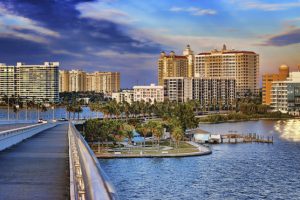 The community-driven process aimed at reinvigorating a prime piece of public land on Sarasota’s bayfront has taken another significant step forward. As leaders of a volunteer movement proposed in July, the Sarasota Bayfront Planning Organization has been created — and the names of its nine members were announced.
The community-driven process aimed at reinvigorating a prime piece of public land on Sarasota’s bayfront has taken another significant step forward. As leaders of a volunteer movement proposed in July, the Sarasota Bayfront Planning Organization has been created — and the names of its nine members were announced. The Ritz-Carlton is synonymous with a lifestyle of singular style and grace. Now, the latest evolution of that lifestyle is making its debut on the glistening shores of Sarasota Bay.
The Ritz-Carlton is synonymous with a lifestyle of singular style and grace. Now, the latest evolution of that lifestyle is making its debut on the glistening shores of Sarasota Bay.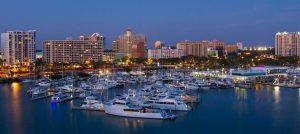 Options for getting around Sarasota could soon evolve from car or bus rides to trips on commuter rails, water taxis and new bike and pedestrian paths.
Options for getting around Sarasota could soon evolve from car or bus rides to trips on commuter rails, water taxis and new bike and pedestrian paths.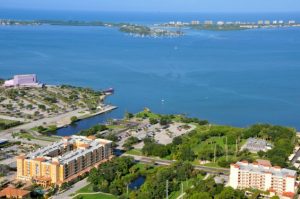 Overview of the progress on the Sarasota Bayfront – July 2016
Overview of the progress on the Sarasota Bayfront – July 2016 The Kolter Group will continue its sweeping changes along Sarasota’s bayfront with The Grande, an 18-story
The Kolter Group will continue its sweeping changes along Sarasota’s bayfront with The Grande, an 18-story  The beginning of 2016 has seen some fluctuations in total sales and home prices as the housing market steadies itself after a record-breaking 2015. Even with a dip in sales, median home prices remain strong and the market appears solid.
The beginning of 2016 has seen some fluctuations in total sales and home prices as the housing market steadies itself after a record-breaking 2015. Even with a dip in sales, median home prices remain strong and the market appears solid.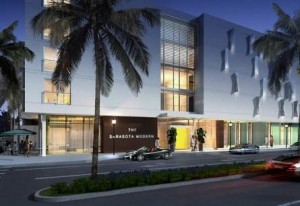 A Boston developer plans to build a boutique hotel in
A Boston developer plans to build a boutique hotel in 